The automotive market is filled with exciting choices, but few models stand out like the Renault Captur and the VW Polo. Both vehicles cater to different preferences and needs, making them enticing options for drivers. In this comparative analysis, we’ll delve into the technical aspects, innovations, and overall appeal of these two cars to help you make an informed decision.
Renault Captur vs VW Polo – Differences & prices compared
Compare performance, boot capacity, efficiency and price at a glance.
Find out which car is the better choice for you – Renault Captur or VW Polo?
Body Type and Design
The Renault Captur embraces the SUV aesthetic, offering a rugged yet chic appearance. Measuring 4239 mm in length and 1797 mm in width, it provides ample interior space for its five seats and boasts a trunk capacity ranging from 326 to 422 liters, depending on the configuration. With a height of 1575 mm, it offers a commanding view of the road.
On the other hand, the VW Polo presents itself as a compact hatchback, highlighting practicality and style. It is slightly shorter at 4074 mm in length and narrower at 1751 mm. Despite its size, it maintains a respectable trunk capacity of 351 liters, making it suitable for urban commuting and occasional road trips.
Engine Options and Performance
Performance is where these two cars express their individuality. The Captur comes with a diverse lineup of engine options, including Full Hybrid, Petrol MHEV, LPG, and standard Petrol engines, ranging in power from 91 HP to 158 HP. The fuel consumption varies from 4.7 L/100km to 7.8 L/100km, making it an efficient choice for those looking to minimize refueling costs. Acceleration from 0-100 km/h ranges between 8.5 to 14.3 seconds, depending on the variant, with top speeds reaching up to 180 km/h.
In contrast, the Polo is powered solely by petrol engines, with outputs from 80 HP to a zippy 207 HP. It manages impressive fuel consumption figures, between 5.2 to 6.5 L/100km, and showcases its vigorous performance with a 0-100 km/h time that can drop as low as 6.5 seconds in the high-performance variant. The VW Polo has a top speed that can go up to 240 km/h, indicating its sporty edge.
Transmission and Driving Experience
Both vehicles offer a choice between manual and automatic transmission, with the Captur featuring an automatic gearbox, manual gearbox, and a dual-clutch automatic system. The Polo also offers similar options, providing a dual-clutch automatic transmission that enhances aspects of its performance and fuel efficiency.
When it comes to the driving experience, the Captur’s SUV design offers higher ground clearance, making it feel more at home on rough terrains and urban landscapes alike. The Polo, however, shines in agility, providing a more nimble and engaging driving experience on tighter roads.
Innovations and Technology
In today's automotive landscape, technology plays a vital role in the consumer choice. The Renault Captur integrates a plethora of modern features such as a large infotainment system with smartphone connectivity, advanced driver-assistance systems, and customizable ambient lighting. Its hybrid variants underscore Renault's commitment to innovation and eco-friendliness.
The VW Polo, known for its high-quality interior, brings cutting-edge technology as well. The infotainment system is intuitive and closely integrated with the driver interfaces, along with additional safety features like adaptive cruise control and lane departure warning. The upscale materials and design elevate the driving experience to new heights.
Conclusion: Which One is Right for You?
Choosing between the Renault Captur and the VW Polo boils down to personal preference and practical needs. If you value a spacious SUV with a variety of powertrain options and a focus on innovation, the Captur is a remarkable choice. Alternatively, if you seek a sporty hatchback with agile handling and a robust engine lineup, the Polo is tough to beat. Both vehicles have their strengths, and enthusiasts of either brand will likely find features that cater to their preferences.
Here’s where it gets real: The technical differences in detail
Costs and Efficiency:
Price and efficiency are key factors when choosing a car – and this is often where the real differences emerge.
VW Polo has a noticeable advantage in terms of price – it starts at 17000 £, while the Renault Captur costs 21100 £. That’s a price difference of around 4127 £.
Fuel consumption also shows a difference: Renault Captur manages with 4.50 L and is therefore slightly more efficient than the VW Polo with 5.10 L. The difference is about 0.60 L per 100 km.
Engine and Performance:
Power, torque and acceleration are the classic benchmarks for car enthusiasts – and here, some clear differences start to show.
When it comes to engine power, the VW Polo has a evident edge – offering 207 HP compared to 143 HP. That’s roughly 64 HP more horsepower.
In acceleration from 0 to 100 km/h, the VW Polo is evident quicker – completing the sprint in 6.50 s, while the Renault Captur takes 8.90 s. That’s about 2.40 s faster.
In terms of top speed, the VW Polo performs distinct better – reaching 240 km/h, while the Renault Captur tops out at 180 km/h. The difference is around 60 km/h.
There’s also a difference in torque: VW Polo pulls a bit stronger with 320 Nm compared to 265 Nm. That’s about 55 Nm difference.
Space and Everyday Use:
Beyond pure performance, interior space and usability matter most in daily life. This is where you see which car is more practical and versatile.
Both vehicles offer seating for 5 people.
In curb weight, VW Polo is to a small extent lighter – 1143 kg compared to 1323 kg. The difference is around 180 kg.
In terms of boot space, the Renault Captur offers to a small extent more room – 422 L compared to 351 L. That’s a difference of about 71 L.
In maximum load capacity, the Renault Captur performs to a small extent better – up to 1363 L, which is about 238 L more than the VW Polo.
When it comes to payload, VW Polo slight takes the win – 457 kg compared to 453 kg. That’s a difference of about 4 kg.
Who wins the race?
The VW Polo proves to be leaves the rival little chance and therefore becomes our DriveDuel Champion!
VW Polo is the better all-rounder in this comparison.
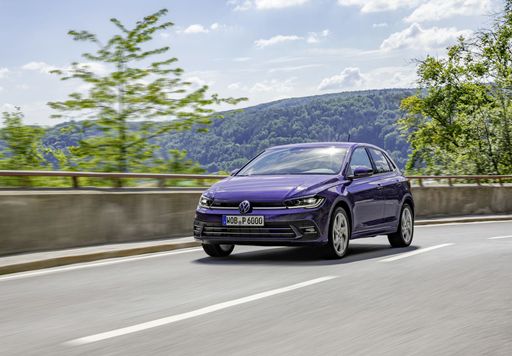 @ Volkswagen AG / VW Media
@ Volkswagen AG / VW Media
VW Polo
Renault Captur
The Renault Captur is a cheeky little crossover that pairs city-friendly agility with a roomy, well-thought-out cabin and enough style to turn heads at the lights. It’s a sensible choice for buyers who want practical versatility and a dash of personality on their daily drives, without taking itself too seriously.
details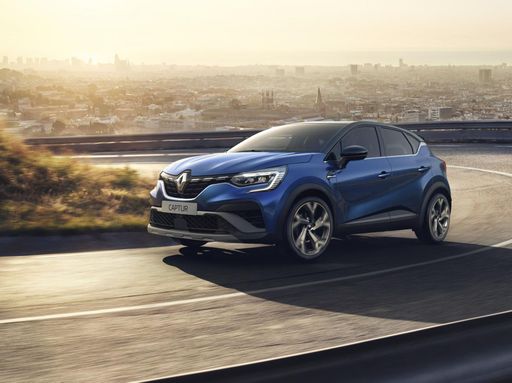 @ Renault Group Media
@ Renault Group Media
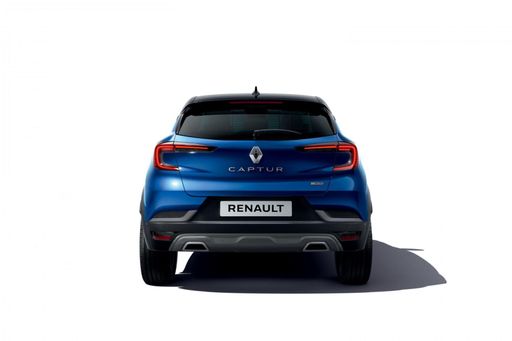 @ Renault Group Media
@ Renault Group Media
 @ Renault Group Media
@ Renault Group Media
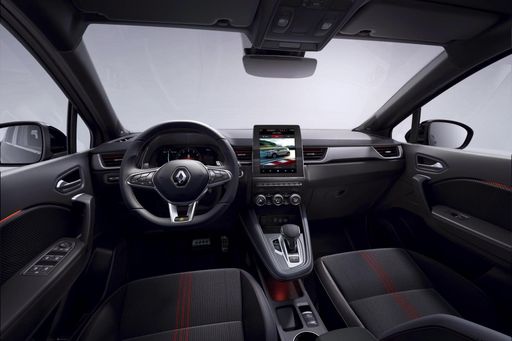 @ Renault Group Media
@ Renault Group Media
VW Polo
The Polo is a small car with surprisingly grown-up refinement, delivering comfortable packaging, crisp handling and a build quality that punches above its class. For buyers who want a practical, fuss-free hatch that still feels a little premium, it’s a sensible, slightly cheeky choice you’ll enjoy every day.
details @ Volkswagen AG / VW Media
@ Volkswagen AG / VW Media
 @ Volkswagen AG / VW Media
@ Volkswagen AG / VW Media
 @ Volkswagen AG / VW Media
@ Volkswagen AG / VW Media
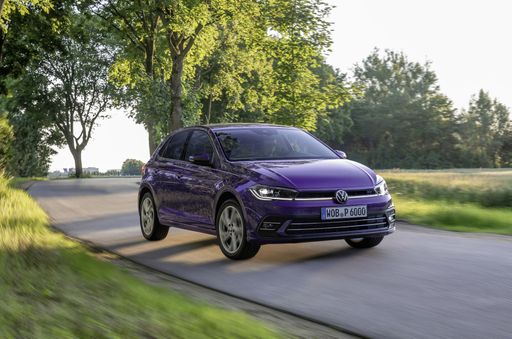 @ Volkswagen AG / VW Media
@ Volkswagen AG / VW Media
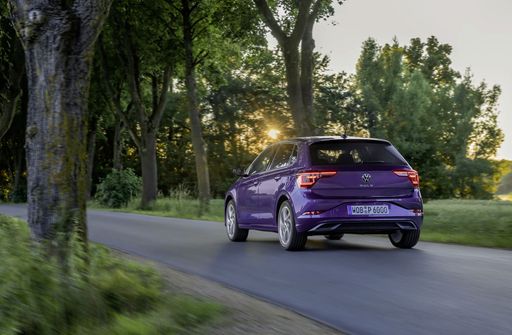 @ Volkswagen AG / VW Media
@ Volkswagen AG / VW Media
 @ Volkswagen AG / VW Media
@ Volkswagen AG / VW Media
 @ Renault Group Media
@ Renault Group Media
|
 @ Volkswagen AG / VW Media
@ Volkswagen AG / VW Media
|
|
|
|
Costs and Consumption |
|
|---|---|
|
Price
21100 - 28300 £
|
Price
17000 - 30400 £
|
|
Consumption L/100km
4.5 - 6 L
|
Consumption L/100km
5.1 - 6.5 L
|
|
Consumption kWh/100km
-
|
Consumption kWh/100km
-
|
|
Electric Range
-
|
Electric Range
-
|
|
Battery Capacity
-
|
Battery Capacity
-
|
|
co2
102 - 137 g/km
|
co2
116 - 148 g/km
|
|
Fuel tank capacity
48 L
|
Fuel tank capacity
40 L
|
Dimensions and Body |
|
|---|---|
|
Body Type
SUV
|
Body Type
Hatchback
|
|
Seats
5
|
Seats
5
|
|
Doors
5
|
Doors
5
|
|
Curb weight
1323 - 1514 kg
|
Curb weight
1143 - 1378 kg
|
|
Trunk capacity
326 - 422 L
|
Trunk capacity
351 L
|
|
Length
4239 mm
|
Length
4074 mm
|
|
Width
1797 mm
|
Width
1751 mm
|
|
Height
1575 mm
|
Height
1431 - 1451 mm
|
|
Max trunk capacity
1276 - 1363 L
|
Max trunk capacity
1125 L
|
|
Payload
376 - 453 kg
|
Payload
432 - 457 kg
|
Engine and Performance |
|
|---|---|
|
Engine Type
Full Hybrid, Petrol, Petrol MHEV
|
Engine Type
Petrol
|
|
Transmission
Automatic, Manuel
|
Transmission
Manuel, Automatic
|
|
Transmission Detail
Automatic Gearbox, Manual Gearbox, Dual-Clutch Automatic
|
Transmission Detail
Manual Gearbox, Dual-Clutch Automatic
|
|
Drive Type
Front-Wheel Drive
|
Drive Type
Front-Wheel Drive
|
|
Power HP
115 - 143 HP
|
Power HP
80 - 207 HP
|
|
Acceleration 0-100km/h
8.9 - 12.3 s
|
Acceleration 0-100km/h
6.5 - 15.6 s
|
|
Max Speed
180 km/h
|
Max Speed
171 - 240 km/h
|
|
Torque
160 - 265 Nm
|
Torque
93 - 320 Nm
|
|
Number of Cylinders
3 - 4
|
Number of Cylinders
3 - 4
|
|
Power kW
84 - 116 kW
|
Power kW
59 - 152 kW
|
|
Engine capacity
1199 - 1789 cm3
|
Engine capacity
999 - 1984 cm3
|
General |
|
|---|---|
|
Model Year
2025
|
Model Year
2024 - 2025
|
|
CO2 Efficiency Class
C, D, E
|
CO2 Efficiency Class
D, E
|
|
Brand
Renault
|
Brand
VW
|
What drive types are available for the Renault Captur?
The Renault Captur is offered with Front-Wheel Drive.
The prices and data displayed are estimates based on German list prices and may vary by country. This information is not legally binding.
